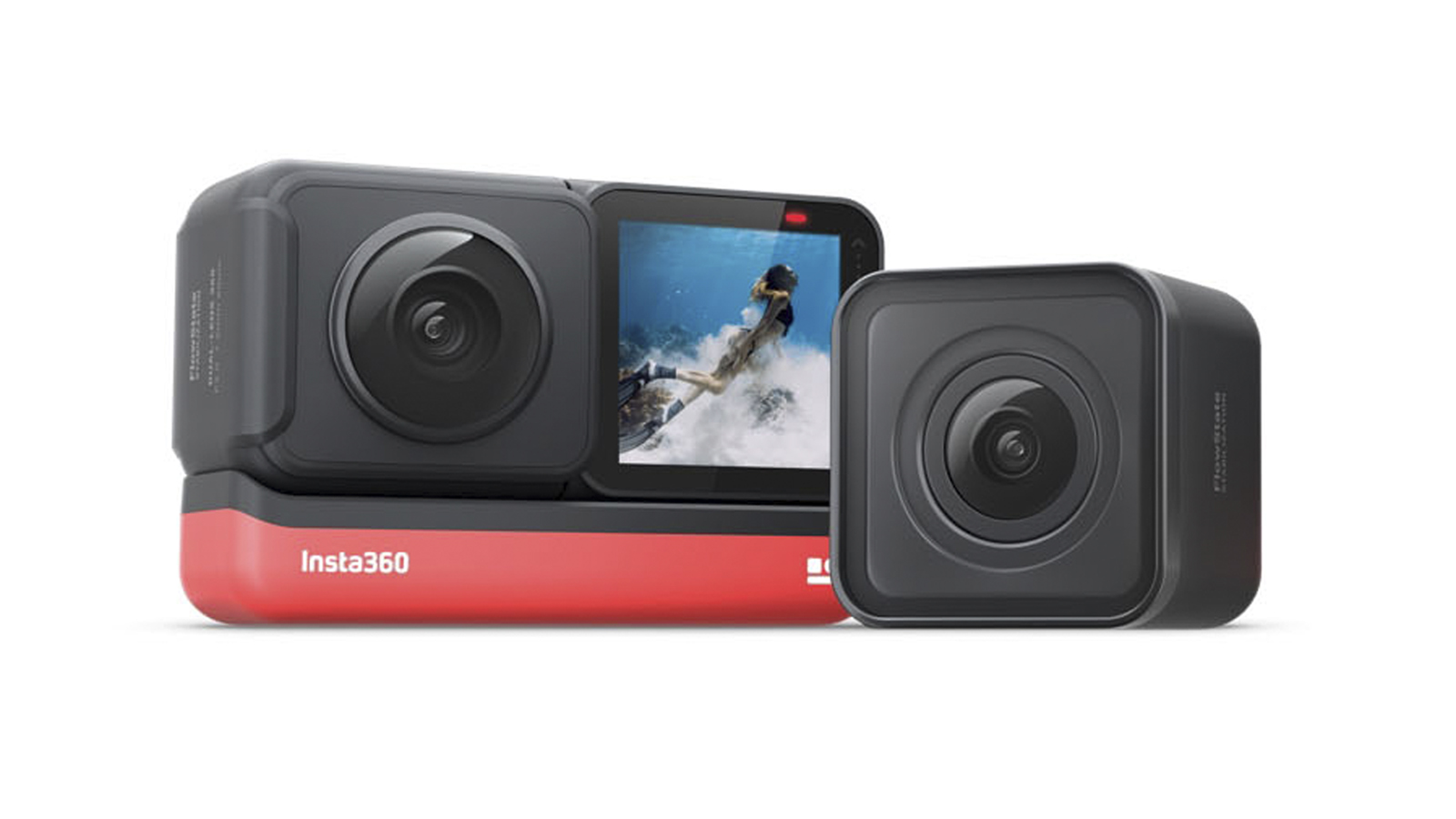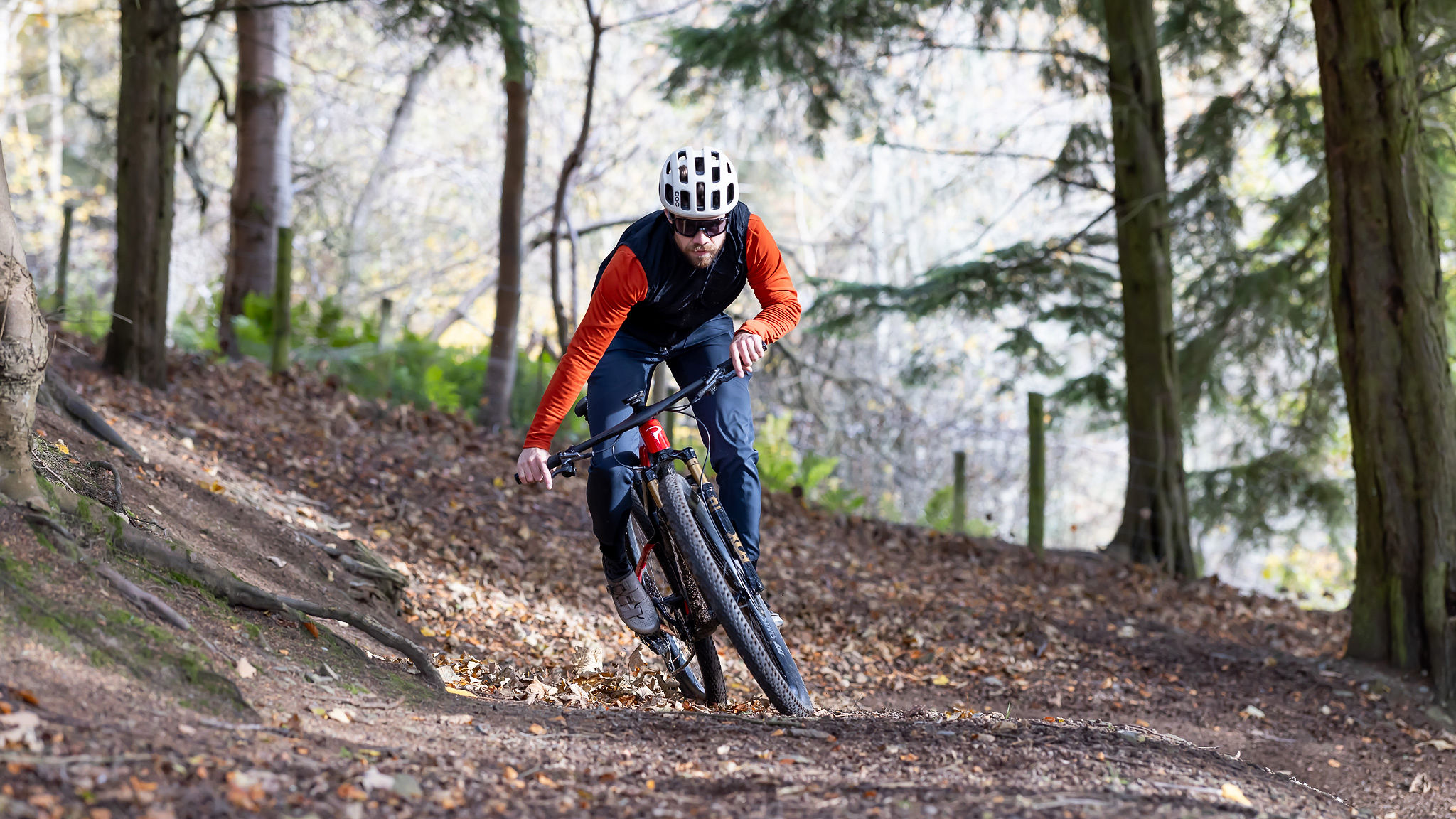Best MTB action cameras – the top devices for recording your rides
Capture every moment on the trail in detail with the best MTB action cameras on the market. Here's our pick of the pack
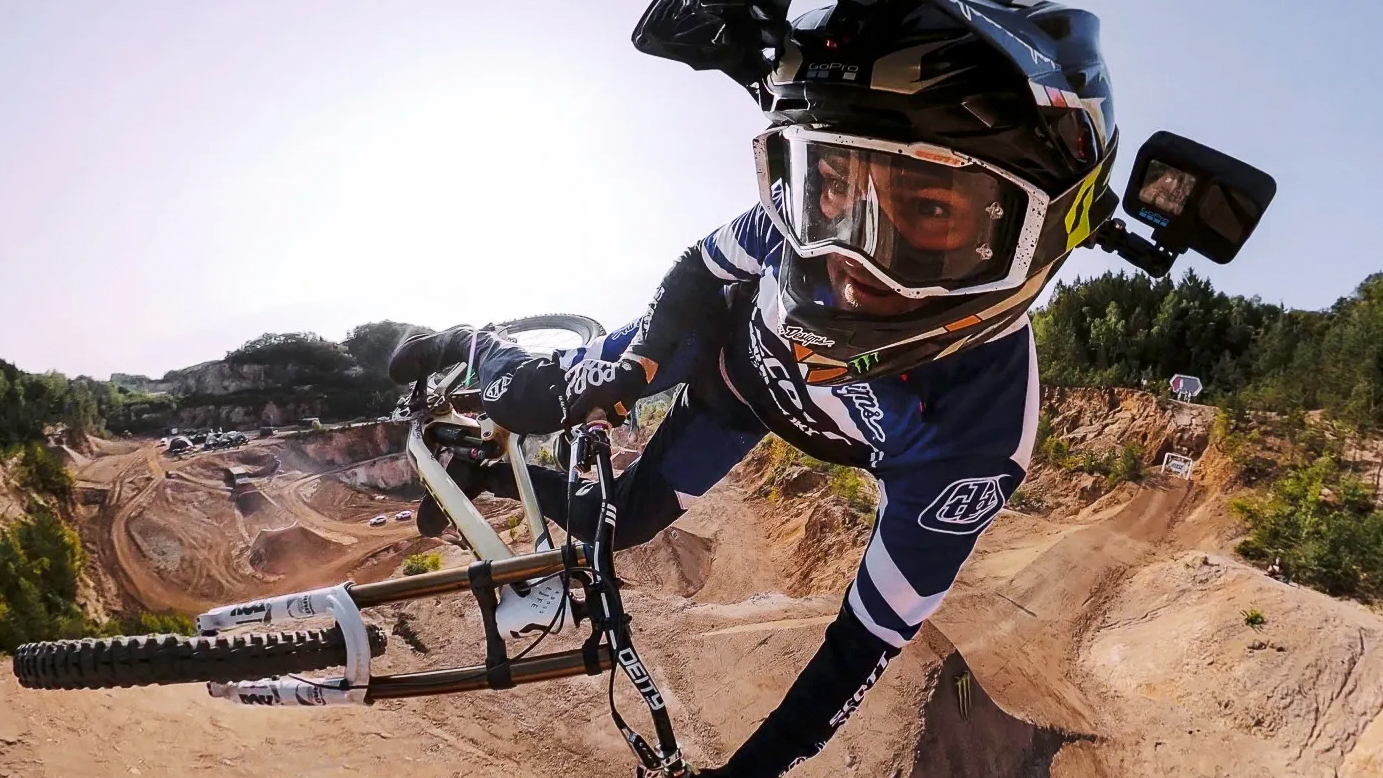
The best MTB action cameras are perfect for capturing your mountain bike adventures and bring an exciting new aspect to your riding. The market for the best action camera for mountain biking is now huge with a load of camera options from brands like DJI and Insta360 challenging the original action camera brand GoPro with exciting features and impressive quality stills and footage, allowing users to create epic edits, inspiring content or just super cool footage to pester your friends and family with.
Using a camera to record your rides is not just for fun and bragging rights though, there’s no better way to learn a new trail before riding it than meticulously replaying somebody else’s footage on YouTube. For coaches and riders wishing to improve their cornering and technical riding posture, a video of you doing it wrong is a lot stronger evidence for correction than some cursory words of advice.
Continue reading to see our list of the best action cameras for mountain biking. Then check out our buying advice at the bottom of the article for some tips on what to look for when it comes to choosing the best option for your riding needs.
Best MTB action cameras
Why trust BikePerfect
1. Best MTB action camera overall
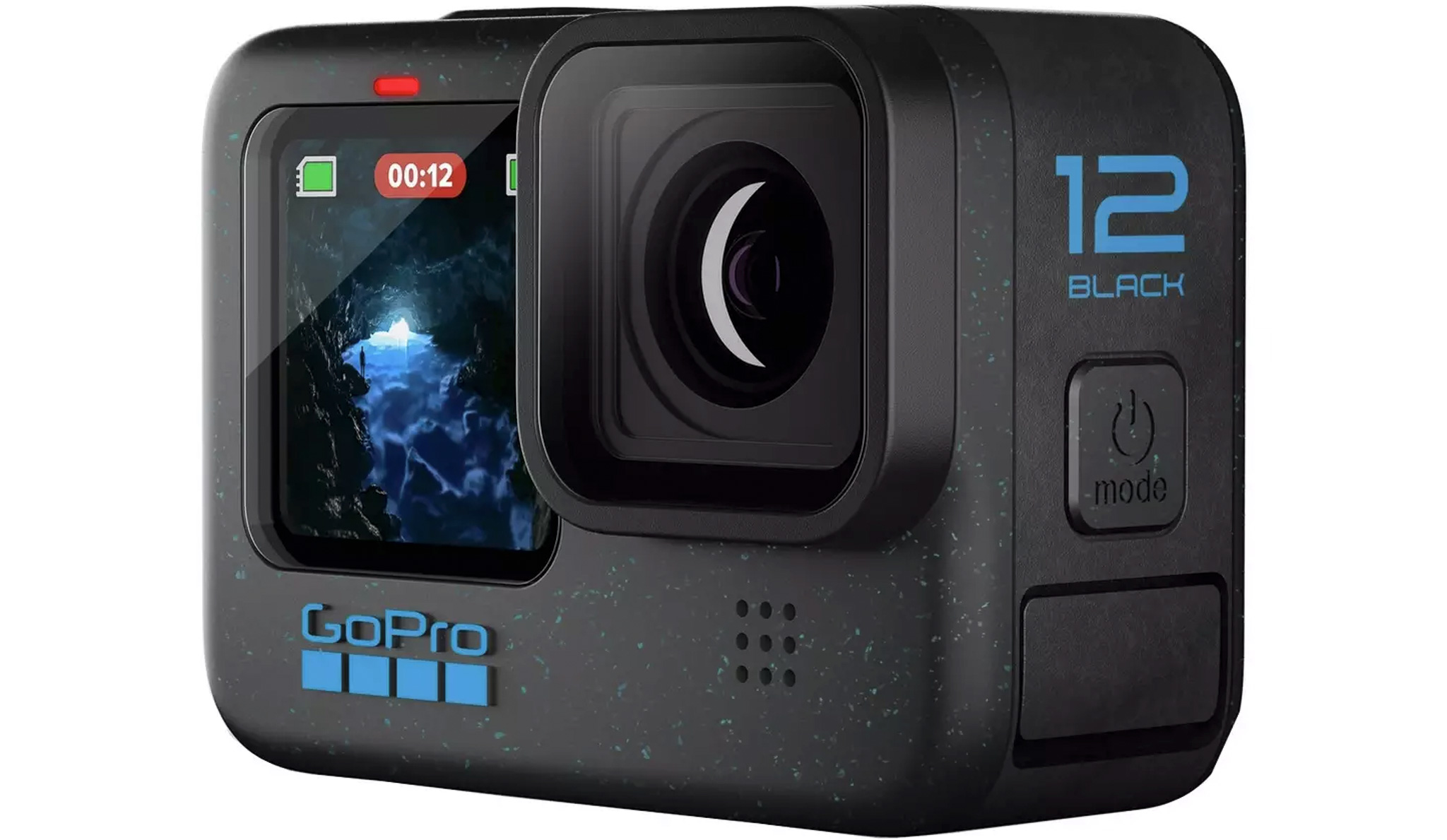
GoPro Hero12 Black
Specifications
Reasons to buy
Reasons to avoid
The GoPro Hero12 Black has very familiar features to its predecessor the Hero11 Black. However, GoPro has done just enough with the Hero12 to level up its latest action camera to make it more versatile and powerful than ever. As close to perfection as it gets when it comes to the best MTB action camera and our best overall recommendation.
One of the main advances over the 11 is the Hero12 Black's stabilization which is fantastic, dialing up or down based on what you're doing, thanks to HyperSmooth 6.0 and AutoBoost. Elsewhere, another advanced feature is resolution and the Hero12 delivers 27MP stills and 5.3K 8:7 video. GoPro's 8:7 aspect-ratio sensor is ready to capture your best mountain bike action footage and makes editing a breeze. Clips can be cropped easily in the GoPro Quik app to 1:1, 16:9, or 9:16 while still retaining a sky-high resolution.
GoPro's frame rates are also best-in-class, with 5.3K footage captured at up to 60fps, 4K footage at up to 120fps, and 2.7K footage at up to 240fps. GoPro even offers this super-fast frame rate with Horizon Leveling active, so you can compensate for tilts without them making it through to your final footage. HDR capture is a welcome addition that makes a tangible difference in bright environments, while the GP-Log capture extends the dynamic range further to great effect.
2. Best value MTB action camera
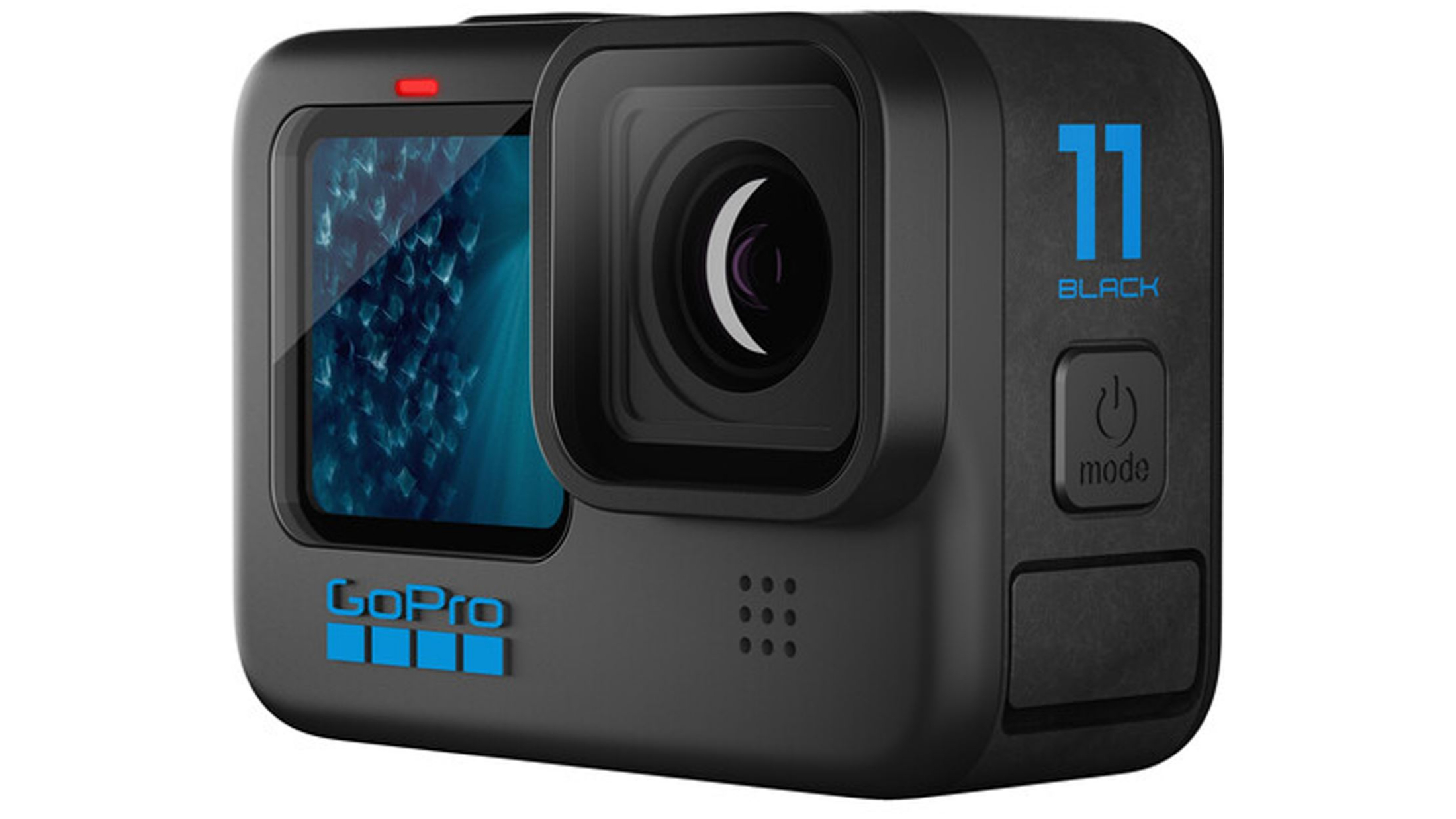
GoPro Hero11 Black
Specifications
Reasons to buy
Reasons to avoid
The GoPro Hero11 Black might have been dethroned from the top spot by its successor – the GoPro Hero12 Black, but that doesn't mean this model isn't still a worthwhile consideration, especially if you shop around and grab it at a discounted price.
The Hero11 Black camera has plenty of the same excellent features found in its Hero12 sibling including improved image stabilization and an 8:7 ratio sensor. Other than an upgrade in photo quality, the sensor doesn't bring any improvement in video resolution. However, this almost-square 1/1/9-inch sensor offers some really useful features.
There's also Hyperview (141-degree FOV) digital lens and Horizon Lock (up to 2.7K) is built in, rather than needing an extra piece of hardware. Once you've got your footage, you can crop your video to 9:16 for TikTok, 1:1 for Instagram, and 16:9 for YouTube without losing any quality.
A bigger sensor also means improved image stabilization thanks to the HyperSmooth 5.0 software, so you'll always be able to focus on the action.
The Hero11 Black looks identical to previous generations but inside you get GoPro's Enduro battery as standard, which increases battery life and cold-weather performance too.
3. Best MTB action camera for 360-degree footage
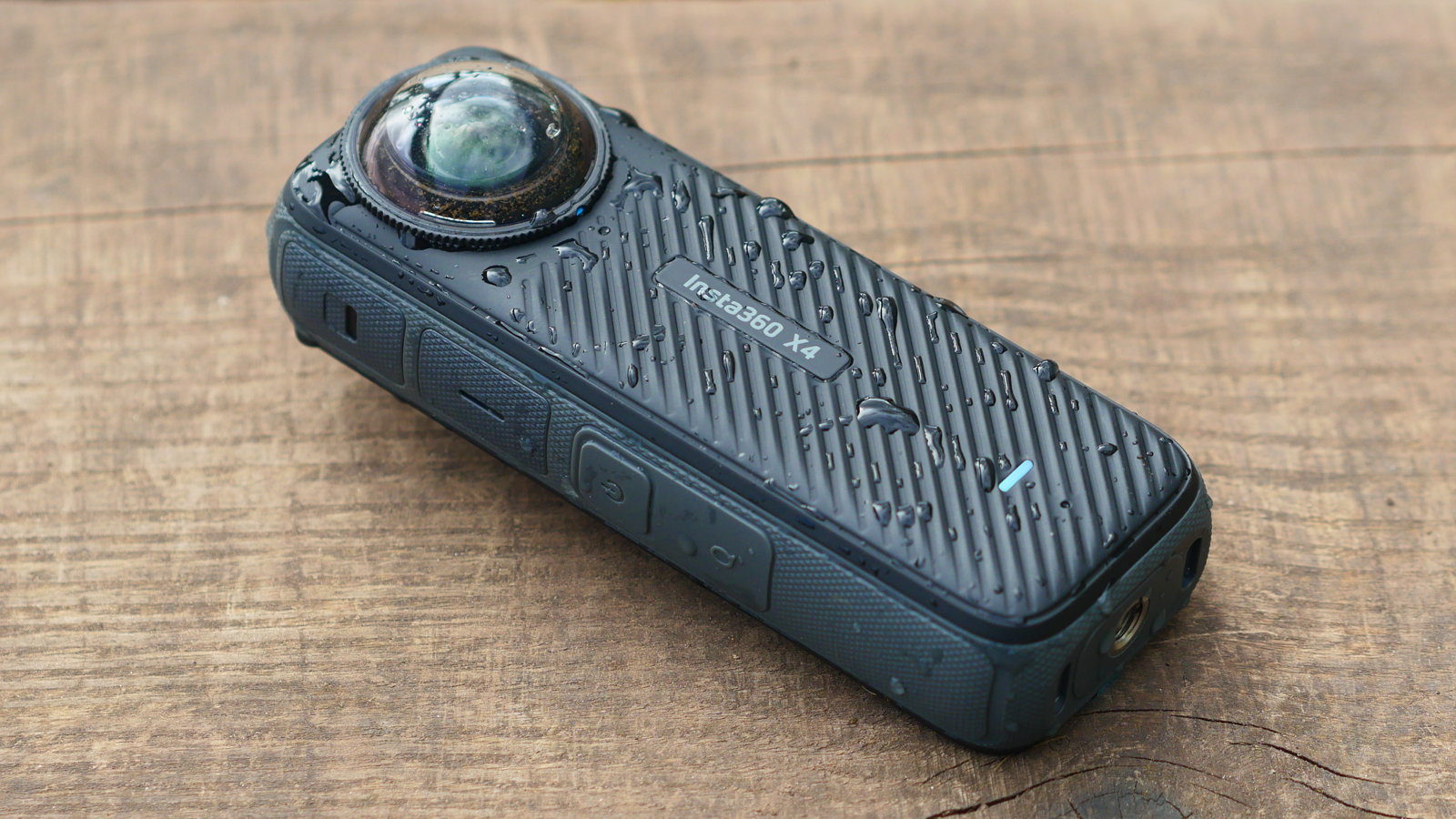
Specifications
Reasons to buy
Reasons to avoid
If you're looking for the most creative angles or want the ability to reframe your shots after a ride, then opting for a 360-degree action camera is going to open up a whole new world of effects and flexibility.
The Insta360 brand is built around 360 cameras and the latest X4 is its most powerful camera yet. High-quality 8K 360 footage captures everything around you which can then be fed into Insta360's smartphone or desktop app for editing and reframing.
'Reframing' can be everything from simply setting the perfect POV angle to wildly distorted perspectives. It's not just the added editing flexibility that makes 360 video a tempting proposition, the X4 has superb stabilization too.
The X4 isn't just about 360 footage either, it can shoot 4K/30fps or in 2.7K/60fps Maxview which gives a huge 170-degree POV and delivers massive 72MP stills too.
Bear in mind that working with 360 footage is a bit more complicated than regular action camera video. Reframing adds another step to the editing process and the 8K 360 files take up a lot of memory.
The X4 also has a huge battery which, on the plus side, gives it a decent battery life, but does add extra weight when mounting it to a helmet.
For more, see our Insta360 X4 first-look review.
4. Best MTB action camera for POV footage
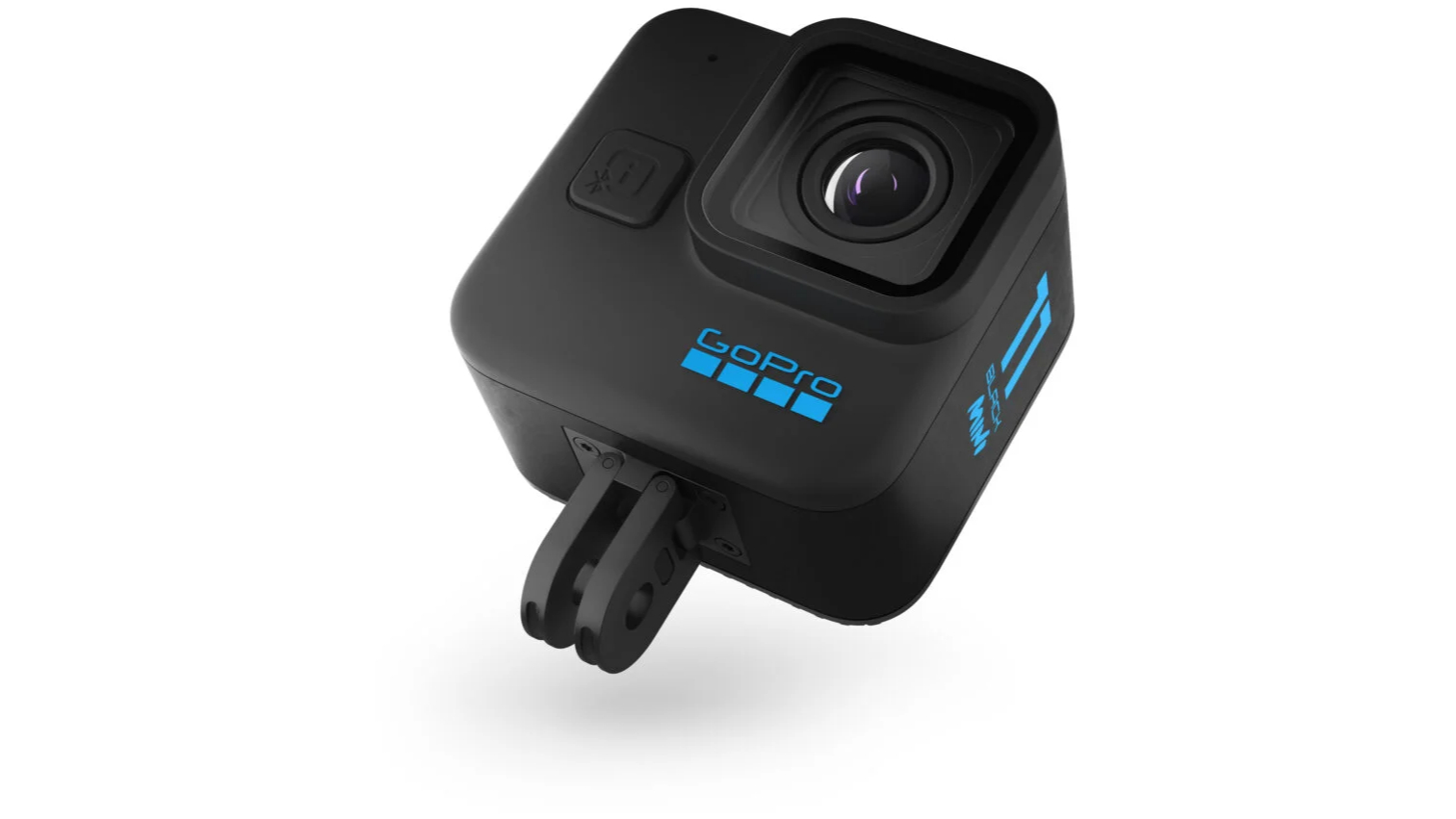
GoPro Hero11 Black Mini
Specifications
Reasons to buy
Reasons to avoid
Many riders were dismayed to see the small, ultra-mountable Session camera dropped from GoPro's range. However, this new mini camera – the Hero11 Black Mini – is great news for POV footage fans.
It's slightly larger than the Session, measuring 52.4 x 38 x 51.2mm and weighing 133g – plus it's considerably smaller than a standard GoPro making it easier and less cumbersome to mount and wear.
Despite its compact size, the Hero11 Black Mini packs a serious punch in the spec department. In fact, it has exactly the same processor, sensor, stabilization, and video settings as the Hero11 Black.
You also get a second mounting point on the rear of the camera making it easier to attach under a helmet peak or other tight spaces.
What's the catch? To make the Mini smaller, GoPro has sacrificed both screens, instead opting for a small black-and-white display showing basic information on battery life, modes, and available recording time.
This means framing a shot requires a little more guesswork or involves pairing the Mini to the app and previewing footage through your smartphone.
You also don't get a photo mode (it's video only) and the battery isn't removable. Still, it's a cracking mini camera for POV footage that's waterproof to 33ft.
5. Best MTB action camera for modular design
Insta360 One R Twin Edition
Specifications
Reasons to buy
Reasons to avoid
Arguably the most adaptive action camera available is the Insta360 One R which uses a modular design to offer users a choice of lenses to suit their shooting requirements.
The Twin Edition comes with three lens options: a 4k wide-angle lens, a 5.7k 360 module, and a 5.3k Leica-engineered 1-inch sensor unit.
It’s not just the lenses that can be changed as the modular design gives a huge range of options for different cases, mounts, and bigger batteries for epic days of shooting.
The One R's performance is punchy too, with excellent video quality backed up with clever features such as wireless mic support for RØDE Wireless GO or Apple AirPods for crisper audio – and even the ability to use an Apple Watch as a remote control.
6. Best older GoPro MTB action camera
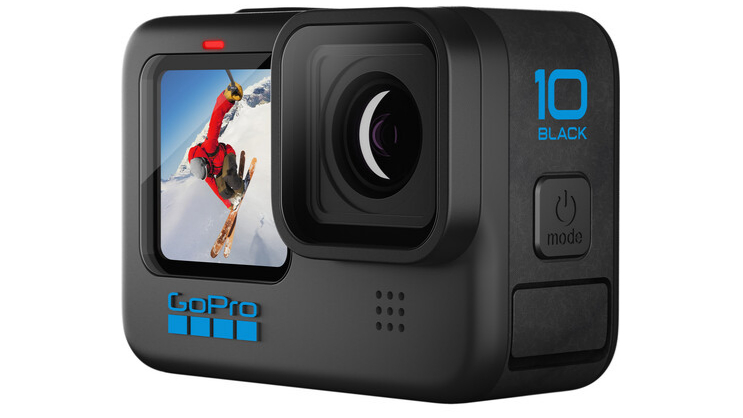
GoPro Hero10 Black
Specifications
Reasons to buy
Reasons to avoid
The Hero10 Black is now one of the oldest GoPro action cameras that is still available to purchase and it's also one of the cheapest. It was once at the flagship GoPro action camera and you still get a superbly durable camera that features some great specs.
The sensor is the same as the Hero11 and delivers 23MP photos and 5.3K video resolution at 60fps. It features a slightly older version of GoPro's Hypersmooth image stabilization which is still very good. Hypersmooth 4.0 image stabilization is still some of the best available – and if you aren't into the 360-horizon-lock look or interested in sharing your video clips across a variety of different social media platforms, then the Hero10 is going to offer you much the same as the Hero11.
You don't get GoPro's new Enduro battery as standard with the Hero10, but it's only a $25 / £25 upgrade if you need the added battery life or cold-weather performance.
7. Best MTB action camera for hidden mounting
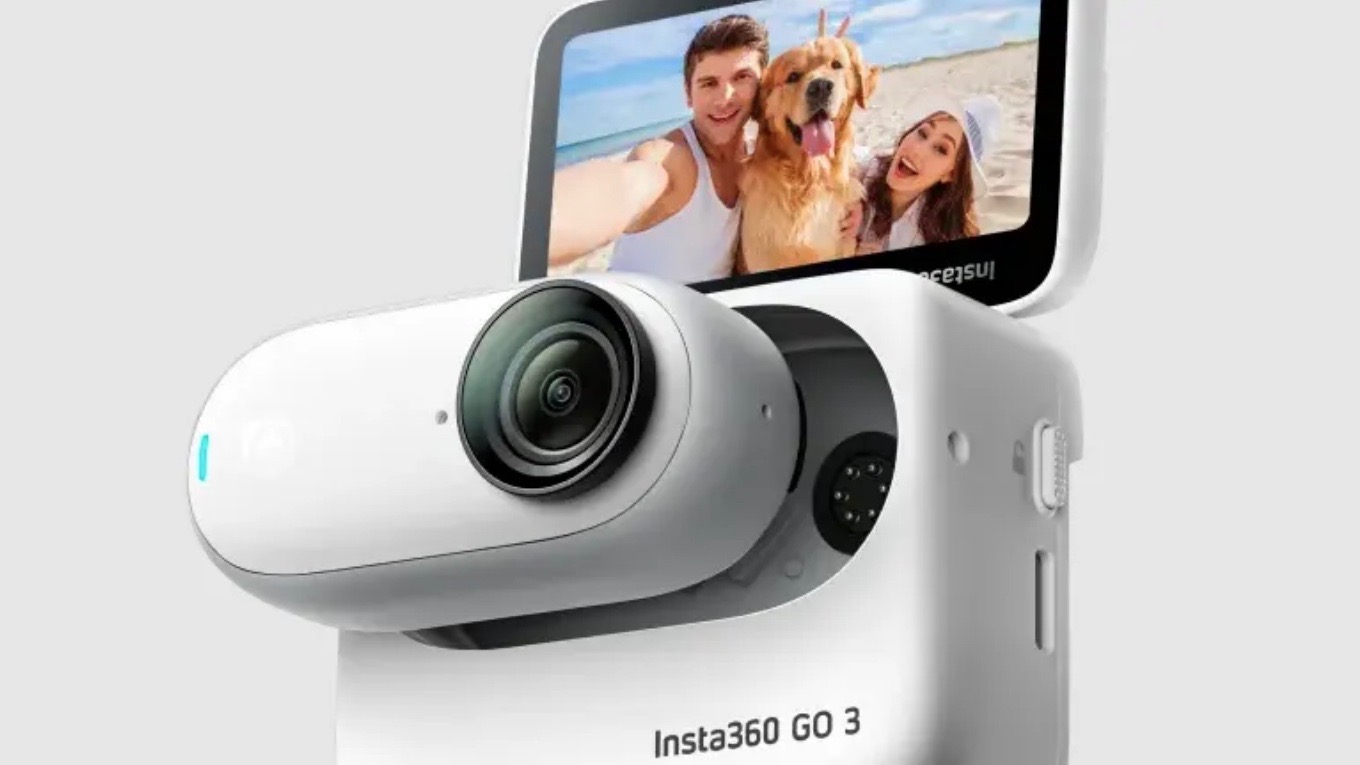
Insta360 Go 3
Specifications
Reasons to buy
Reasons to avoid
The Go 3 is the latest update of Insta360's mega-popular action camera. It's still super tiny (about the size of your thumb) but now ups recording resolution to 2.7k (1536p) from the Go 2's previous high of 1440p and weighs an extra 9g.
As before, it uses FlowState Stabilization to get rid of shakes, bumps and rolls and 360 Horizon Lock for smooth clear video, also including Time Shift, Slow Motion, PureShot HDR Photo and Timelapse functions to help you get creative in the edit.
As you'd expect, it's a joy to operate – a single press of the front button starts recording – while using Insta360's Voice Control 2.0 means you can keep your hands free for other things like avoiding that shark or cliff edge.
Shooting with the Go 3 on its own gets you 45 minutes of video, plus new improved AI-editing tools meaning tweaking footage on your Android or iOS phone is a lot more straightforward.
But click the Go 3 into the Action Pod – with flip LED touchscreen, remote preview and quick menus – and you get enough power for 170 minutes of shooting.
Even though the Action Pod is only splashproof (with an IPX4 rating), the Go 3 is completely waterproof (down to 16ft) with an IPX8 rating, so is brilliant for capturing underwater footage bursts of up to 45 minutes between charges.
Plenty of fun official accessories (from Dive Case to Fetch Stick) are available on Insta360's site, so you can really get the most out of owning one.
8. Best MTB action camera for field of view
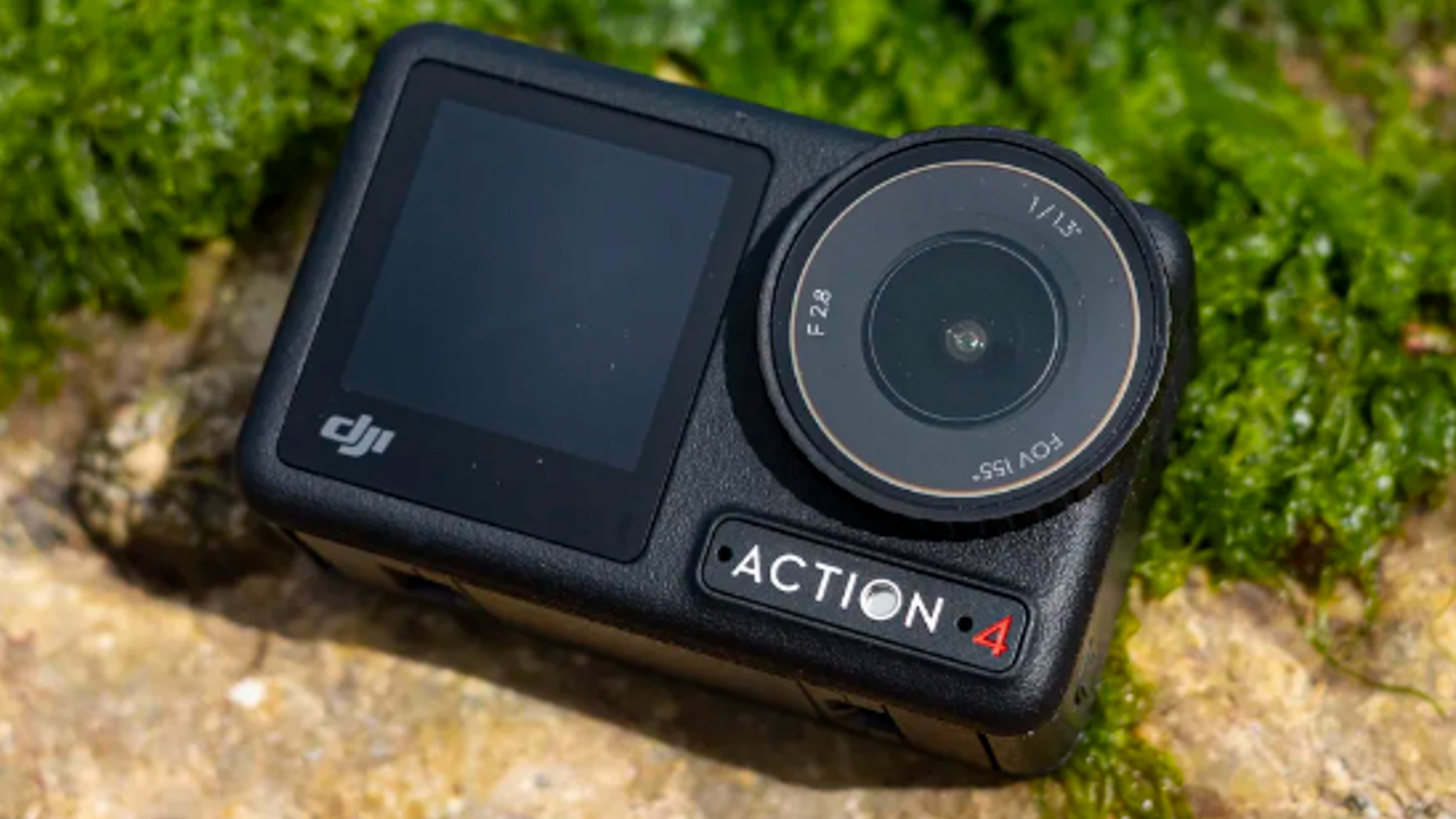
DJI Osmo Action 4
Specifications
Reasons to buy
Reasons to avoid
The Osmo Action 4 boasts one of the widest fields of view of any standard (non-360) action camera – a whopping 155 degrees which DJI says delivers a perspective as close as you can get to what the human eye sees. This means it fits more in the frame – which is ideal for engaging chest footage – and also features front and rear touchscreens for simple framing.
The footage (up to 4K at 120fps) is good quality too and the EIS stabilization software does a brilliant job of smoothing out vibrations as long as there's good light.
The Action 4 also uses a magnetic mounting system which makes removing and attaching the camera really easy, plus it can be mounted in either landscape or portrait orientations, depending on your needs. It comes with a selection of different mounts too, meaning it can go just about anywhere on your bike.
9. Best MTB action camera for 4K on a budget
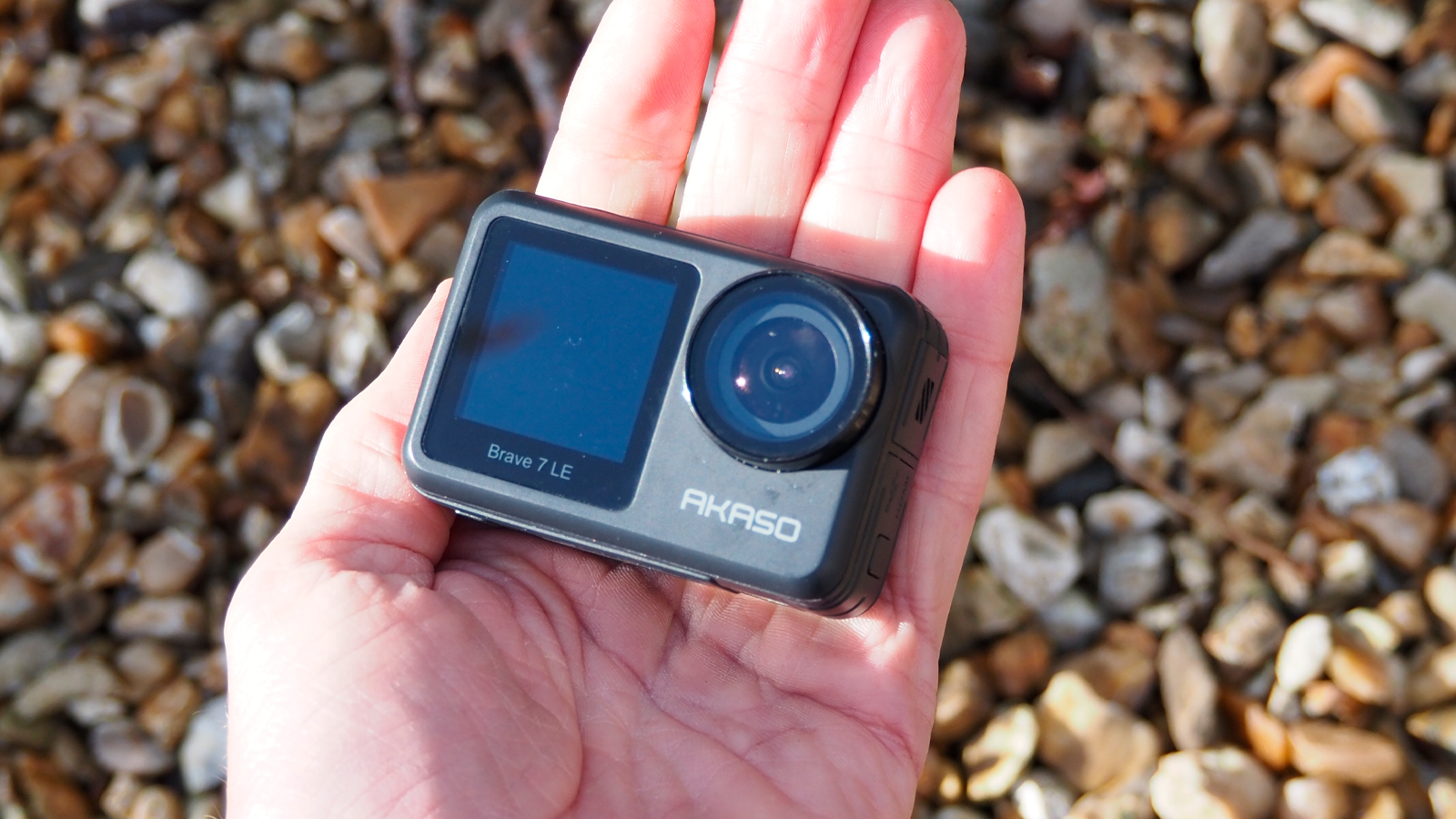
AKASO Brave 7 LE
Specifications
Reasons to buy
Reasons to avoid
The Akaso Brave 7 LE has a pretty impressive spec with its front preview and rear touchscreen displays, 4K recording, and built-in stabilization.
While these features compete with the best action cameras for mountain biking, they fall a bit short in terms of performance when compared to the top products from GoPro, Insta360 or DJI.
Where the Brave 7 LE trumps them all is price. It dramatically undercuts all of the big players, as well as Akaso's own Brave 8 too.
This means that if you don't need the best possible image quality, are happy to tolerate a slightly bulky waterproof case – and an occasionally buggy smartphone app – then the Brave 7 LE is going to be the best budget option.
How to choose the best MTB action cameras
While many of the best MTB action cameras will have unique features that will appeal to some people more than others, there are a few common attributes that they should all have when it comes to recording your MTB adventures.
- Ruggedness: An action camera for mountain biking will need to be capable of handling the roughest of trails, and be solid enough to survive a drop or a crash. A good level of waterproofing is essential for handling bad weather and accidental drops in water too. The majority of cameras we've highlighted are pretty much bombproof and the Insta360 X4 proved its rugged performance when our tester Graham accidentally dropped it in a pond.
- Image stabilization: A key feature for shooting adventure sports including mountain biking is that your end result footage is smooth and watchable, with no camera shake. The quality of image stabilization can vary, and the price will be reflected in the footage. So it’s worth considering how smooth your video needs to be (or whether you can live with a few wobbles). The GoPro Hero 10 has Hypersmooth 4.0 image stabilization which was the flagship version only a few years ago and still will give you perfectly acceptable footage at a much lower price than newer GoPros.
- Mounting system: Your action camera will be pretty much redundant for mountain biking if you can't attach it to either your helmet, body or bike. Most cameras will come with a few accessories allowing it to be attached in numerous places and of course, there are a load of after-market options too. The DJI Osmo Action 4 has a magnetic mounting system with a host of mounts to suit most needs which means you can place the camera almost anywhere.
What to look for in the best action camera for mountain biking
What minimum camera resolution should I be looking for?
Unless you plan on watching your footage on a large computer screen or TV monitor, resolution isn’t critically important.
You’re never going to try and capture a still image from your rolling action cam footage and attempt to print it to an A3-sized wall poster.
At best, you want to view your footage at 4K, but even that’s a bit much, as video recording technology leapfrogs ahead of screen capabilities.
However, resolution capabilities on MTB action cameras are getting more and more impressive. Many are now capable of recording in 4K and 60 frames per second, and the GoPro Hero9 and Hero10 Black go even higher.
Why is dynamic range important in an action camera?
Pure resolution isn't everything as dynamic range plays a very important role in producing clear and crisp footage. This is the ability of a camera sensor to capture the broadest possible detail in a scene, between its brightest and darkest tones.
The human eye has much better dynamic ability than any camera, which is why you can drop from an exposed trail in direct sunlight to gloomy forest singletrack and not struggle to see where you’re going.
A camera would struggle to capture all the detail of a scene in dappled light, with sharp drops of sunlight and deep shadows.
For a MTB action camera, dynamic range is crucial – not resolution. You don’t need the most pixels, but rather the best ones.
What other features and functions should I consider?
There are a range of ergonomic and practical considerations. Is the action camera easy to attach to your handlebar, chest mount or helmet?
Does it have image-stabilizing software, so that when you’re ping-ponging through a rock garden, the camera captures footage that’s viewable rather than nausea-inducing?
Are the buttons and functions easy to operate while wearing gloves out on a trail?
Perhaps you don’t want to bother with buttons at all, and prefer voice control?
These are all features that are essential when it comes to choosing the best action camera for mountain biking.
What are the differences between fisheye, wide-angle and 360 lenses?
Most action cameras choose a wide-angle or fisheye lens to capture as much of the scene as possible.
Different brands offer different distortions and fields of view, so it’s worth watching some footage before you buy a certain brand to see if you like the look of it.
Fisheye lenses have a curved barrel distortion whereas wide-angle footage has a linear distortion. The best action cameras will offer different fields of view and distortions so you have options to pick the one best suited to what you’re filming.
In recent years, 360 cameras have made huge leaps forward in quality.
These cameras record a full 360-degree scene and allow you to pick and choose your framing and effects in post-processing, while also offering incredible stabilization, which can be a huge advantage when recording high-intensity moments.
Their disadvantages are they require a lot of editing as well as computing power and memory as the video files are huge.

Graham Cottingham joined the BikePerfect team as our senior tech writer in 2020. With over 20 years of riding experience, he has dabbled in downhill, enduro, and gravel racing. Not afraid of a challenge, Graham has embraced bikepacking over the last few years and likes nothing more than strapping some bags to his bike and covering big miles to explore Scotland's wildernesses. When he isn’t shredding the gnar in the Tweed Valley, sleeping in bushes, or tinkering with bikes, he is writing tech reviews for BikePerfect.
Rides: Cotic SolarisMax, Stooge MK4, 24 Bicycles Le Toy 3, Surly Steamroller
Height: 177cm
Weight: 71kg
- Paul BrettStaff writer
